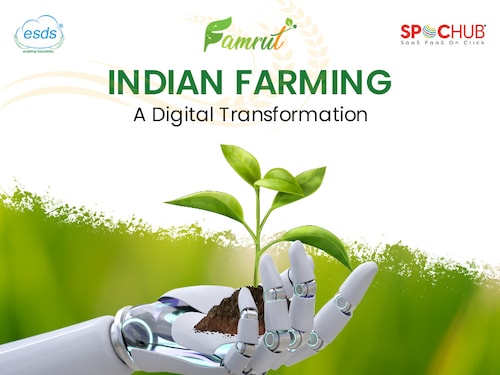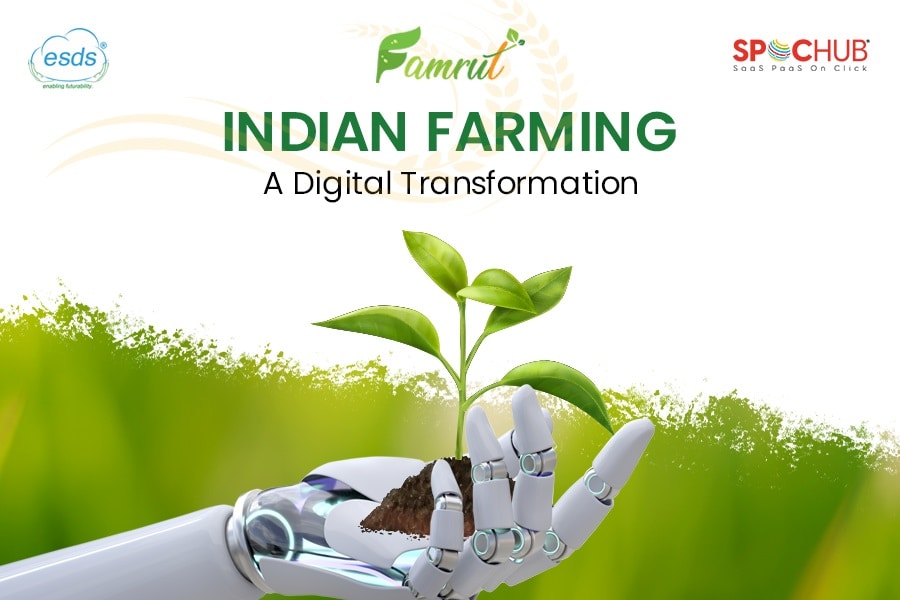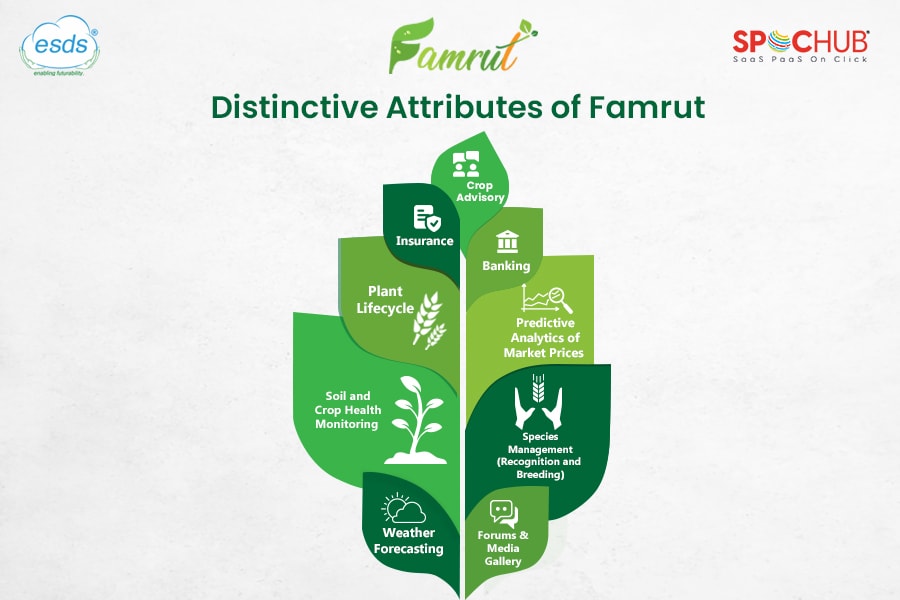FAMRUT - Revolutionizing the agri-tech ecosystem
Empowering agriculture by delivering future-ready farming solutions


 Which sector was considered the base for building the great nation, we call India? Which sector continues to employ the majority of the workforce in the country?
Which sector was considered the base for building the great nation, we call India? Which sector continues to employ the majority of the workforce in the country?
It is the Agricultural sector. Right from the First Five Year Plan, agriculture and irrigation were two of the primary points of focus for building what we now boast of as the fifth largest economy in the world. Even as the country is celebrating its 75 years of Independence, it is the sector that continues to employ more than 40% of its workforce. As per the NITI Ayog, Indian agriculture accounts for 18.3% of the gross domestic product (GDP) and nearly 40% of the total rural Net Domestic Product (NDP) during 2020. Most significant was that even when the economy was feeling the heat due to the uncertainties caused by the pandemic, the agriculture sector of India witnessed a progressing growth. Which was a 4.3% rate in the 4th quarter of FY21.
 If everything is going so well, which persisting issues still affect the agriculture sector?
If everything is going so well, which persisting issues still affect the agriculture sector?
What bottlenecks are causing hindrance in achieving the dream of doubling the income of Indian farmers?
If we refer to the Ministry of Agriculture GOI data in this context, the factors related to low productivity and high average cost in Indian agriculture include a seed replacement rate of 31.6% for Wheat, 21.7% for Gram, and 63% for Rapeseed/mustard. The gap in NPK use as compared to optimum % with the gap for Nitrogen is 3.31%, Phosphorous 19.14%, and Potash 51.09%. Apart from this, the decreasing average size of farmland holding is also a significant factor affecting the sector, with a mere average of 1.08 hectares recorded in 2015-16.

Another significant issue the Indian agricultural sector faces is the reluctance to adopt technology when smartphones have become a part of everyday lifestyle, even in rural areas. For example, as of September 2021, out of 1.52cr farmers, only about 52 lakhs registered for the PM Kisan portal in Maharashtra. Through all these, we also expect our farmers to feed the ever-growing population and support the economy. Is that fair if we don"t support them through what we have in terms of resources and knowledge? The bottleneck that we at ESDS tried to tackle in this prospect is the improper approach to technological penetration in the sector. We expect the farmers to come towards the technology when we should instead take technology towards the farmers and make it a part of their lifestyle. With Famrut, ESDS wishes to do the same, delivering future-ready farming solutions and connecting farmers with all relevant stakeholders of the entire agricultural sector, all through a single mobile app. A dedicated team of skilled experts at ESDS Software Solution developed Famrut with a mission to digitally handhold farmers with the right choice of plantation to extract maximum yield and revenue from the same piece of land. By 2025, Famrut aims to quadruple farmers" income through Digital Empowerment across the country.
How will Famrut work?
As a Smart in-built cloud platform, Famrut comes with:
Smart Technology: To enable all the Smart Agro tech companies powered by Cloud IoT, blockchain, and AI/ML to collect, predict, analyze and monitor farm data in real-time
Predictive Analytics: To deliver decision-making tools that bring consistency, dependability, and sustainability to agriculture & related business
Smart Ecosystem: To promote Horticulture by providing farmers direct calling access to agronomists, field experts, universities, loans, insurance providers, etc.
Dashboard: To make use of real-time reporting, analysis, and insight that can span across geographies, to digitize every farm while managing the entire ecosystem data on one single screen.
With a perfect blend of Artificial Intelligence (AI) and Machine Learning (ML) technologies for Digital Agriculture Famrut facilitates:
• Climate Control
• Greenhouse Automation
• Crop Management
• Precision Farming
• Agricultural Drones
• Predictive Analytics for Smart Farming
• Satellite Mapping and Surveying
 What about the much-needed financial assistance?
What about the much-needed financial assistance?
How often have you seen the news flashing the frustration displayed on the streets of Indian farmers for various reasons? Did you know the average debt burden of an Indian farmer is over Rs. 2 lakh? Finance is one of the most crucial and challenging factors for farmers across the country. However, farmers lack support with limited access and knowledge for arranging funds to get the necessary agri-inputs and tools. With 18+ years of banking experience through ESDS, Famrut brings in the technology platform that provides farmers with much-needed guidance and financial support. Just think of emergency farming and allied activity loans and finances and Insurance at farmers’ fingertips within no time. Also, through this innovative app, in coordination with various financing institutions and cooperative banks, Famrut is providing virtual Query Resolution, Loyalty solutions, and Insurance schemes to better engage with local farmers and move the entire economy towards prosperity. Apart from this, the live feed of the prices of crops in the local markets gives farmers the advantage of well-planned harvesting and manoeuvring of their produce.
Famrut is created to bring prosperity to farmers by handholding them digitally we aim to create a platform that connects the entire agri-ecosystem with farmers with a click and helps them become truly Independent.
The pages slugged ‘Brand Connect’ are equivalent to advertisements and are not written and produced by Forbes India journalists.
First Published: Oct 11, 2022, 14:21
Subscribe Now